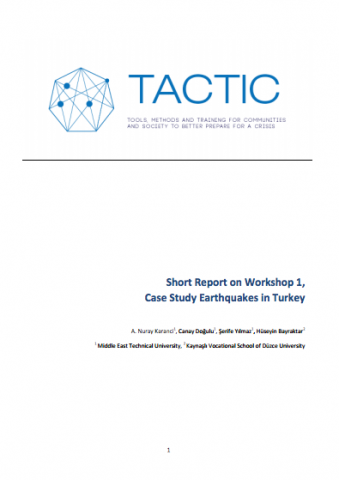Case Study
Case Study Earthquakes in Turkey

As stated in the DoW, the earthquakes case study in Turkey focuses on individual, community, and organizational preparedness for earthquakes, and the secondary hazards related to earthquakes (e.g., fires) and other hazards (e.g., floods, landslides, forest fires, and chemical spills related to transportation accidents) in Kaynaşlı, which was hit by the 1999 earthquake. There are four main objectives of this case study.
- The first objective is to identify key stakeholders both governmental and non-governmental institutions and organizations.
- The second objective is to evaluate lessons learnt from previous disasters, good practices of community participation, and hindering factors related to this participation based on an examination of research findings and grey literature as well as the findings of the pre-workshop in-depth interviews with stakeholders and the first workshop in this case study. This includes also cross-border issues, when meaningful.
- The third objective is to evaluate the facilitating and hindering factors which affect community preparedness for multiple hazards.
- The fourth and final objective of this case study is to provide a case through which to develop, test and validate the community preparedness audit (i.e., self-assessment tool) (WP2), the communication and education material and practices (WP3), and the overall long-term learning framework (including evaluation) (WP8).
© TACTIC Consortium, April, 2015.
